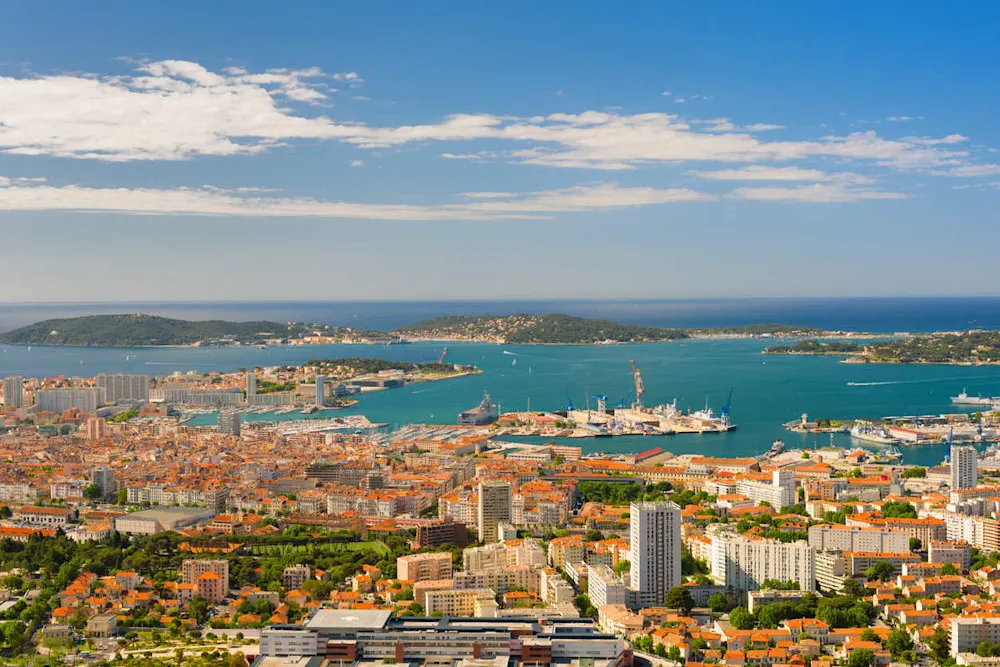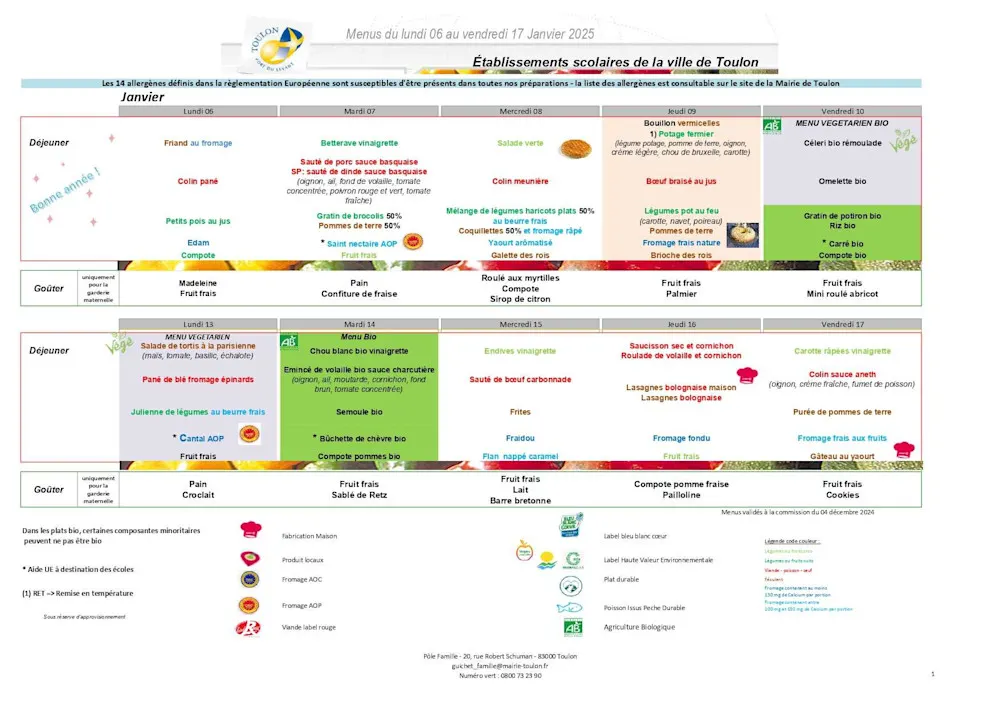I’d been living in France for just over five years when I gave birth to my daughter. Like many expectant mothers, I went through a rollercoaster of emotions. Would I raise my daughter in France? What about daycare, preschool, elementary school… and beyond? What could I expect from the education system in my adopted homeland?
As the questions swirled in those early months, my confidence in France began to grow—mainly because I’d had such a wonderful pregnancy experience.
Off and running, I began researching the best hospitals in our area as soon as I found out I was expecting. While my doctor in Toulon (a city about 45 minutes from Marseille) was top-notch, I discovered a higher-rated hospital just 15 minutes away in the town of Hyères.
It turned out to be an absolute dream—welcoming and friendly, with a real “family feeling” from the moment I entered the maternity ward, and equipped with all the modern bells and whistles you’d hope for in maternity care. I felt genuinely good about everything.
Thanks to the flexibility of the French healthcare system, I was able to keep my doctor in Toulon while also scheduling consultations with a new doctor at the Hyères hospital.
Get Your Free France Report Here
Get Your Free France Report Here
Learn more about France and other countries in our daily postcard e-letter. Simply enter your email address below and we’ll send you a FREE REPORT: A Taste of France: All the Ingredients for the Good Life.

By submitting your email address, you will receive a free subscription to IL Postcards, Overseas Dream Home, The Untourist Daily and special offers from International Living and our affiliates. You can unsubscribe at any time, and we encourage you to read more about our Privacy Policy.
Maternity Leave and At-Home Care

In my final trimester, I went on maternity leave about three weeks before my due date. France offers 16 weeks of paid leave for a first child, and fathers are entitled to up to 25 days.
On top of that, my new doctor “prescribed” a midwife to visit me at home daily to monitor the baby and check my blood pressure—all fully covered under French healthcare.
The midwife arrived equipped with a portable sonogram machine and a mobile French health card reader. She simply slid in my card, and the visit was instantly registered on my health record.
The big day came with a flurry of excitement, and the birth went smoothly. After a full day of rest with our newborn, a team of nurses helped us bathe and change her, checking in every few hours to see how we were doing.
I stayed in a private room for five days and received phenomenal care. For what we contribute to the French healthcare system—around $2,300 annually, depending on income, plus an additional $100 per month for private top-up insurance—my entire hospital stay and birth were completely covered.
For months afterward, I tiptoed nervously to the mailbox, half-expecting a bill that never came. It felt like winning the lottery.
Then came the time to enroll our little bundle in daycare. As in the U.S., friends recommended applying early for a place in a crèche—France’s government-subsidized daycare. But unlike back home, the cost was significantly lower.
Affordable Daycare—and Real Community
It’s a good idea to apply for a crèche as soon as you know you’re expecting. The standard start date is in September each year, though exceptions can sometimes be made for a January intake. If your maternity leave ends before then, it’s easy to hire a nanny—called a nounou—through a child-minding agency.
While more expensive (typically between €18 to €26 per hour), hiring through an agency spares you the headache of French employment paperwork and ensures that all nounous have been properly vetted. Plus, you’re entitled to a 50% tax credit on money spent for a nounou, with a maximum of €6,750 credited.
If you don’t get a spot in a crèche right away, you’ll be placed on a waiting list and may need to wait a few months for an opening.
In areas with large expat communities—such as Paris, Nice, Marseille, Lyon, Lille, Strasbourg, Montpellier, or anywhere along the French Riviera—you can often find help navigating the crèche process in English. In smaller towns and villages, a decent level of French is essential.
I applied through the local mairie (town hall), and my daughter was eventually placed in a Montessori-style crèche. In the interim, we had a nounou for a few months.
That, too, was a dream experience. The crèche director was hands-on and incredibly caring, with an open-door policy. The daycare staff were all licensed caregivers, deeply invested in the children’s well-being.
One Christmas party stands out in my memory: the staff built a replica of Santa’s sleigh, took Polaroid photos of each parent and child, placed them in handmade frames, and capped off the evening with crafts and refreshments. It was magical.
Crèche fees are based on household income and calculated on a sliding scale. With our income above the €3,000/month threshold, we paid just under €5 per hour. The lowest rate starts at just €0.50. Parents also receive a 50% tax credit on annual daycare expenses, up to €1,750 per child.
Ophelie, one of the caretakers at the crèche, became my daughter’s babysitter after she left daycare. We’re still in touch to this day, some eight years later.
After the crèche period, we enrolled our daughter in a private elementary school (école élémentaire), which begins at age three in France—the equivalent of preschool. While some of my French girlfriends hesitated about the extra cost, I felt like I’d won the lottery. We pay just €258 (about $279) a month, which includes a hot lunch (three courses, no less!) and 1.5 hours of supervised study hall after school.
French school lunches—whether in public or private schools—are truly something special. A typical meal might start with beet salad in vinaigrette, followed by a main dish of Basque-style pork with red peppers, onions, and garlic, served alongside a potato and broccoli gratin. Then comes a slice of Saint-Nectaire AOP cheese, with fresh fruit for dessert.
My daughter is now in fourth grade, and our experience with the private French school system has been absolutely incredible. Preschool was a joyful blur of glitter and glue sticks—and learning how to eat with a fork and knife in the school cantine. By kindergarten, things really took off.

An Education That Inspires Confidence
She had the same teacher for both years of maternelle—the moyenne section and grande section. In the moyenne section, the theme was the continents. When they got to North America, I gave a short presentation about the U.S. to a very enthusiastic group of four- and five-year-olds. One boy asked me if I knew about Andy Warhol and his soup cans. Another curious little face wanted to know if I’d ever visited the Flatiron Building in New York. I was amazed at how much they had already learned—and honored to be a small part of it.
I stayed on as we made homemade brownies in tiny toaster ovens the teacher had brought into class.
The following year, the theme was art. My daughter was placed in the cubism group—building on their earlier lessons in impressionism and fauvism. For Father’s Day, the students recreated a Salvador Dalí painting and wrote art-themed poems for their papas. I’ll never forget the morning she stood proudly in the living room, reciting her poem. It remains one of my most cherished memories.
At almost 10 years old, and in this supportive community of educators, she has excelled in science, math, geography, and language arts—to name a few. I half fear she may be smarter than I am.
Since we’ve had such a great experience, we’ll continue to go the private route in middle school and high school. Many private schools in France have a Catholic foundation, and there are also several international schools around the country. It’s best to choose an international school if you have school-age children who don’t currently speak French.
High schools are divided into general study (lycée general), with the option to add a technological emphasis (lycée technologique) after the first year of study—like management science, food science, industrial science, sustainable development, and many others.
While general and technological courses are taught at the same school, France has vocational high schools (lycée professionnel) which offer a direct career path upon graduation.
Public education, from elementary school through secondary education is free. Higher education is close to free as well. Students pay an enrollment fee every year—€170 for a BA/BS equivalent, €243 for a Master's, and €380 for a Doctoral degree.
Something that felt like a leap of faith so many years ago has become one of the top things I appreciate about living in France.
Get Your Free France Report Here
Get Your Free France Report Here
Learn more about France and other countries in our daily postcard e-letter. Simply enter your email address below and we’ll send you a FREE REPORT: A Taste of France: All the Ingredients for the Good Life.

By submitting your email address, you will receive a free subscription to IL Postcards, Overseas Dream Home, The Untourist Daily and special offers from International Living and our affiliates. You can unsubscribe at any time, and we encourage you to read more about our Privacy Policy.
